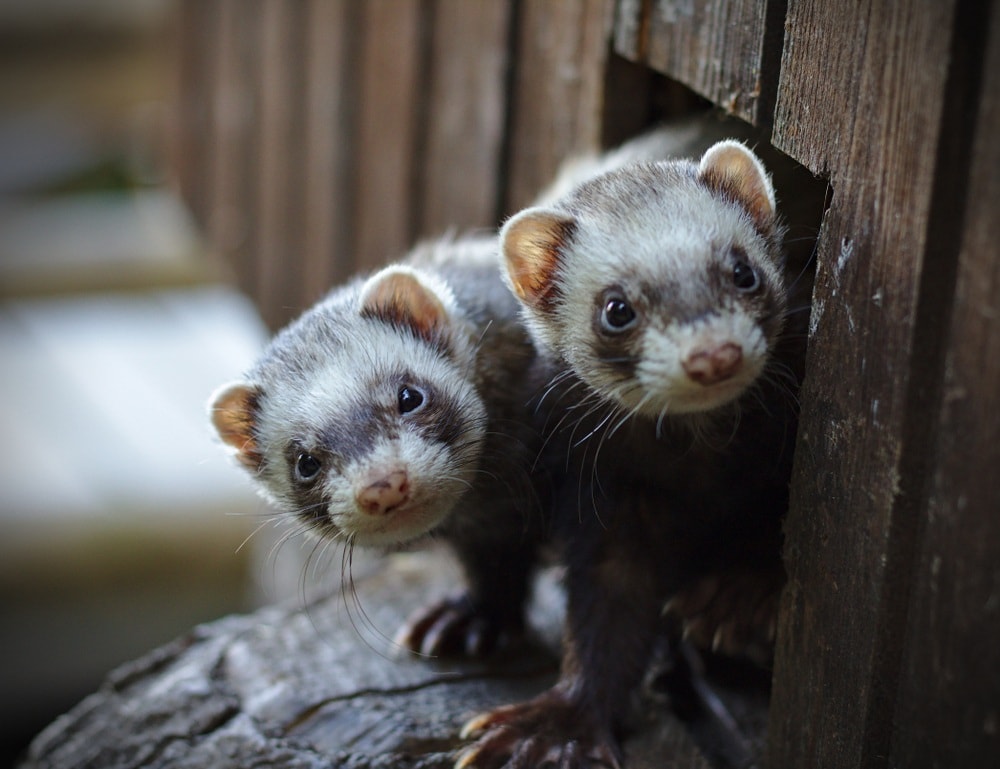
There’s a great deal of variation in pet ferrets, but they’re all the same breed: Mustela putorius furo. That said, we can see plenty of variation when it comes to each ferret’s coat color and pattern.
If you’re trying to figure out what color your ferret is, you’ll first need to identify the color of their coat and then see what pattern they have over this coat color.
The American Ferret Association lists eight colors that are seen in domestic ferrets. Let’s take a look!
Ferret colors
(1) Sable Ferrets
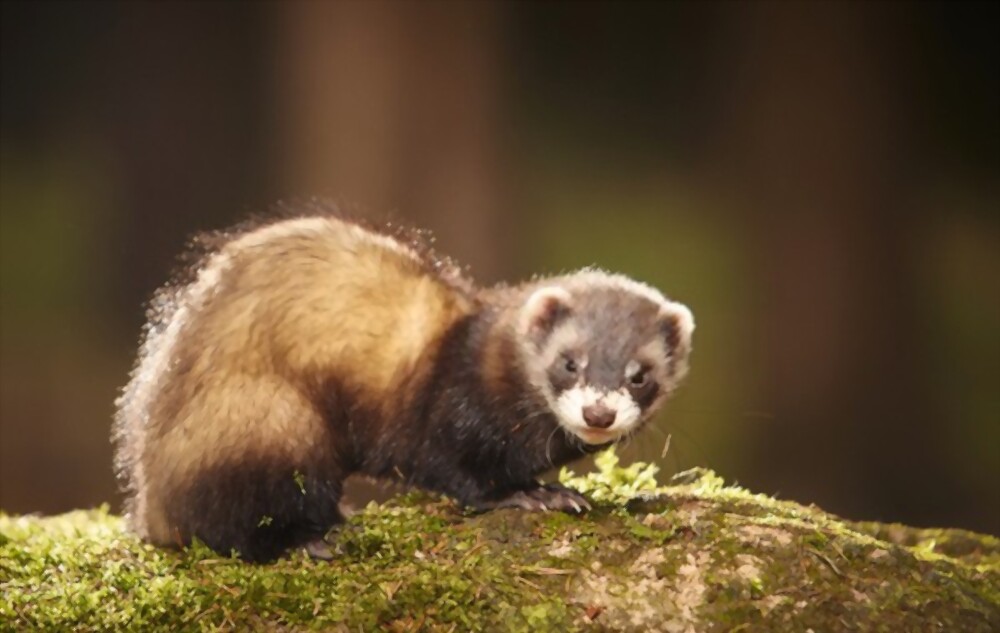

This is one of the most commonly seen colors in domestic ferrets. Sable-colored ferrets will have the upper guard hairs of their coat in a rich and deep warm brown. Their undercoat will be paler, with tones of white and cream preferred for showing ferrets, but you’ll also see light golden undercoats too. Their eyes will be brown, verging on black. A sable ferret’s nose will be light brown, a speckled brown, or with a brown outline in a “T” shape.
(2) Black Sable Ferrets
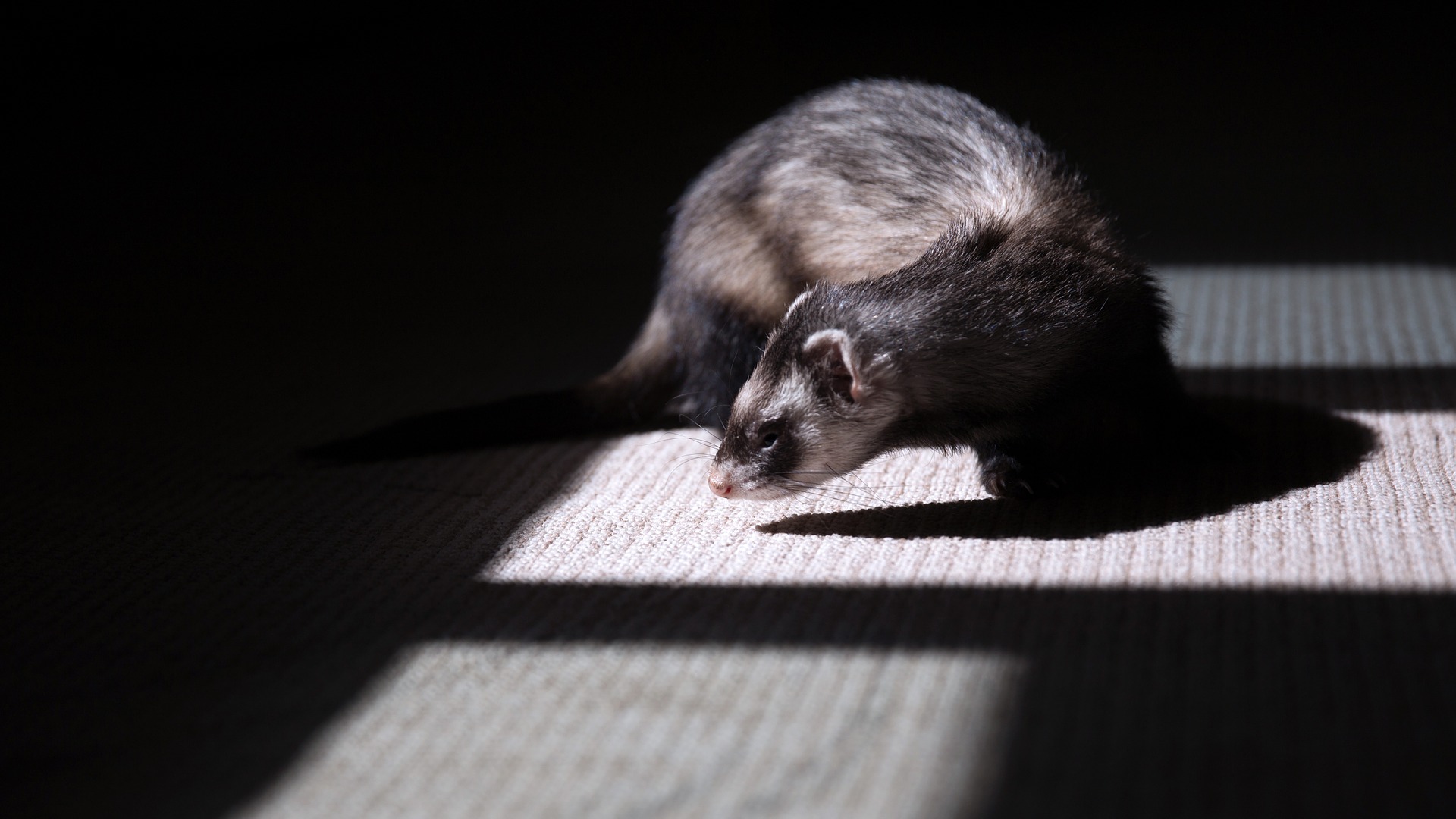

Black sable ferrets will have black to dark brown guard hairs with a white or cream undercoat. There shouldn’t be any warm tones in this coat color. Black sable ferrets should have black or very dark brown eyes, and their noses are preferably black or nearly black, but a speckled black nose is also allowed.
(3) Chocolate Ferrets
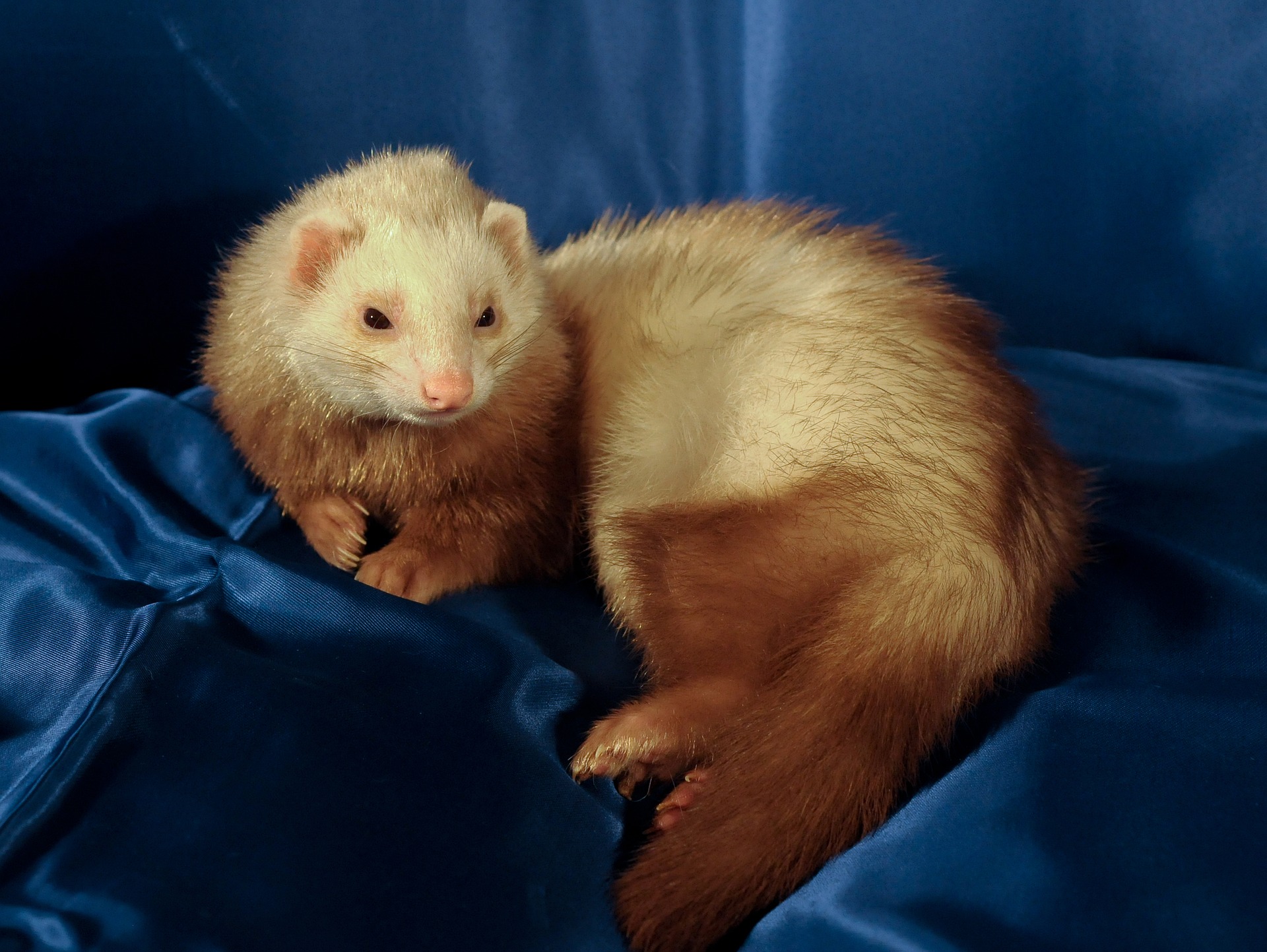

Chocolate ferrets have guard hairs in a milk chocolate brown with warm tones. Their undercoat can be white verging toward golden. Chocolate ferrets will have brown or dark burgundy eyes, with pink, brown, beige, or brick-red noses. The pink nose color can also have a light brown T outline.
(4) Champagne Ferrets
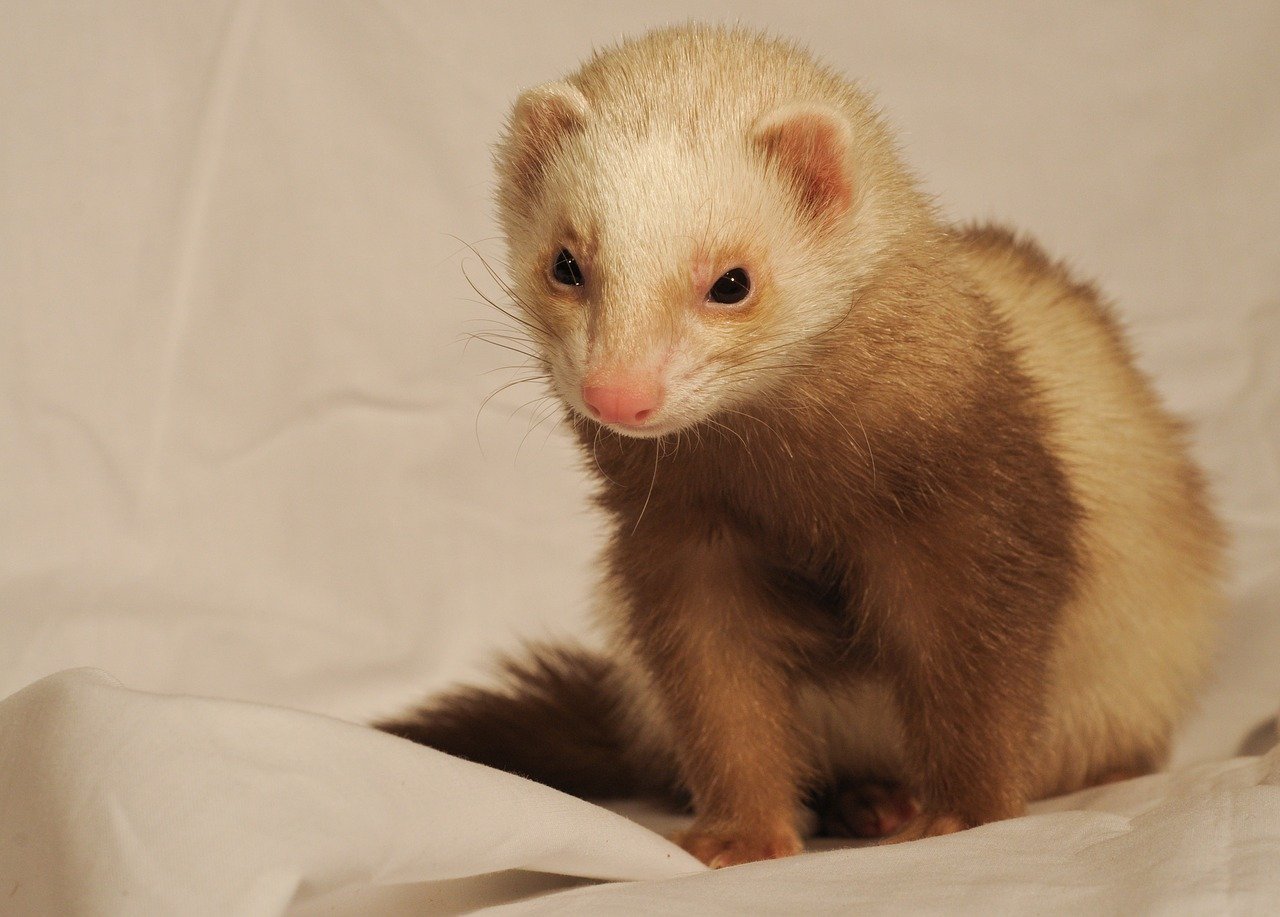

Champagne is the diluted version of a chocolate coat color. Their guard hairs will be a pale warm brown, with a white or cream undercoat. Their eyes will be burgundy tones, and either light or dark is acceptable. A champagne ferret’s nose can be pink beige or pink with a T outline in light brown or beige.
(5) Cinnamon Ferrets
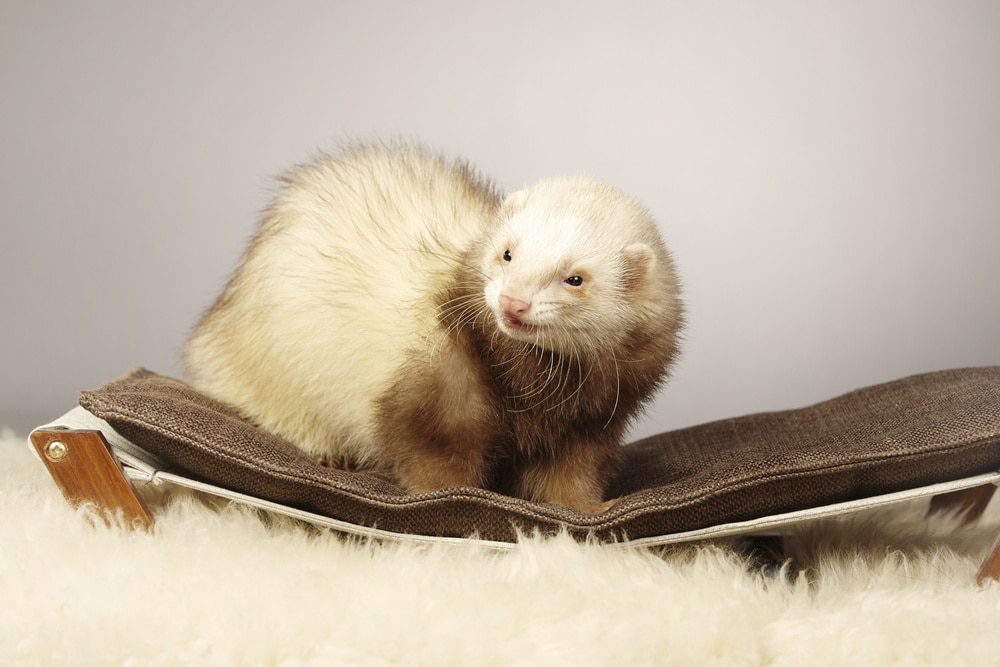

Cinnamon is an unusual color and can sometimes be confused with champagne. Once you look closely, you can see a distinct difference between the two! The guard hairs of a cinnamon ferret are a rich light brown with a red cast. This is especially obvious when they’re sitting in the sun. Their undercoats should be golden to white. As with the champagne coat color, they will have burgundy eyes that can be dark or light. Their nose will be preferably brick red in color, but beige or pink with a T outline in brick or light brown is also accepted. Sometimes a cinnamon ferret will have a pink nose, but this is not a preferred color for showing.
(6) Black Ferrets
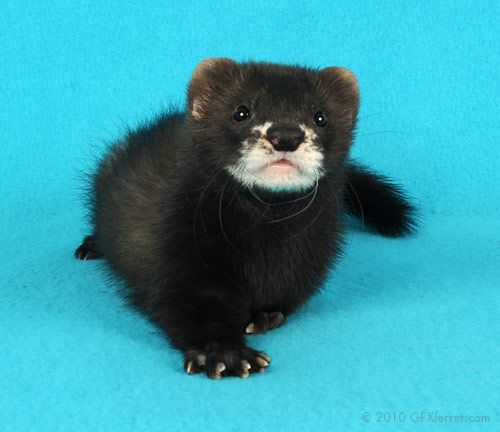

Black ferrets will have guard hairs in true black color. Their undercoats are white or golden. They have dark brown or nearly black eyes, combined with black noses. Sometimes their noses will be speckled.
(7) Albino Ferrets
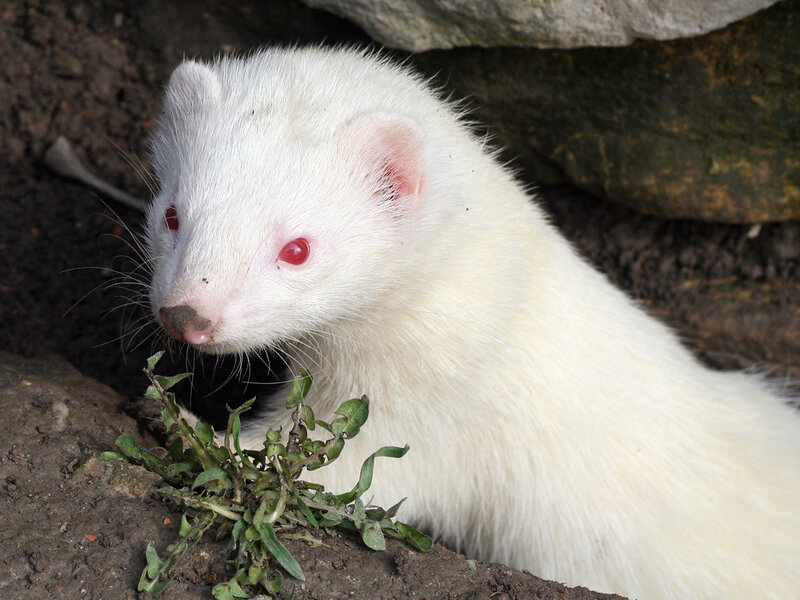

Albino ferrets have an absence of any pigment or pattern. Their fur of both the guard hairs and the undercoat will be white or a pale cream. Albino ferrets have ruby red eyes and pink noses.
(8) White Ferrets
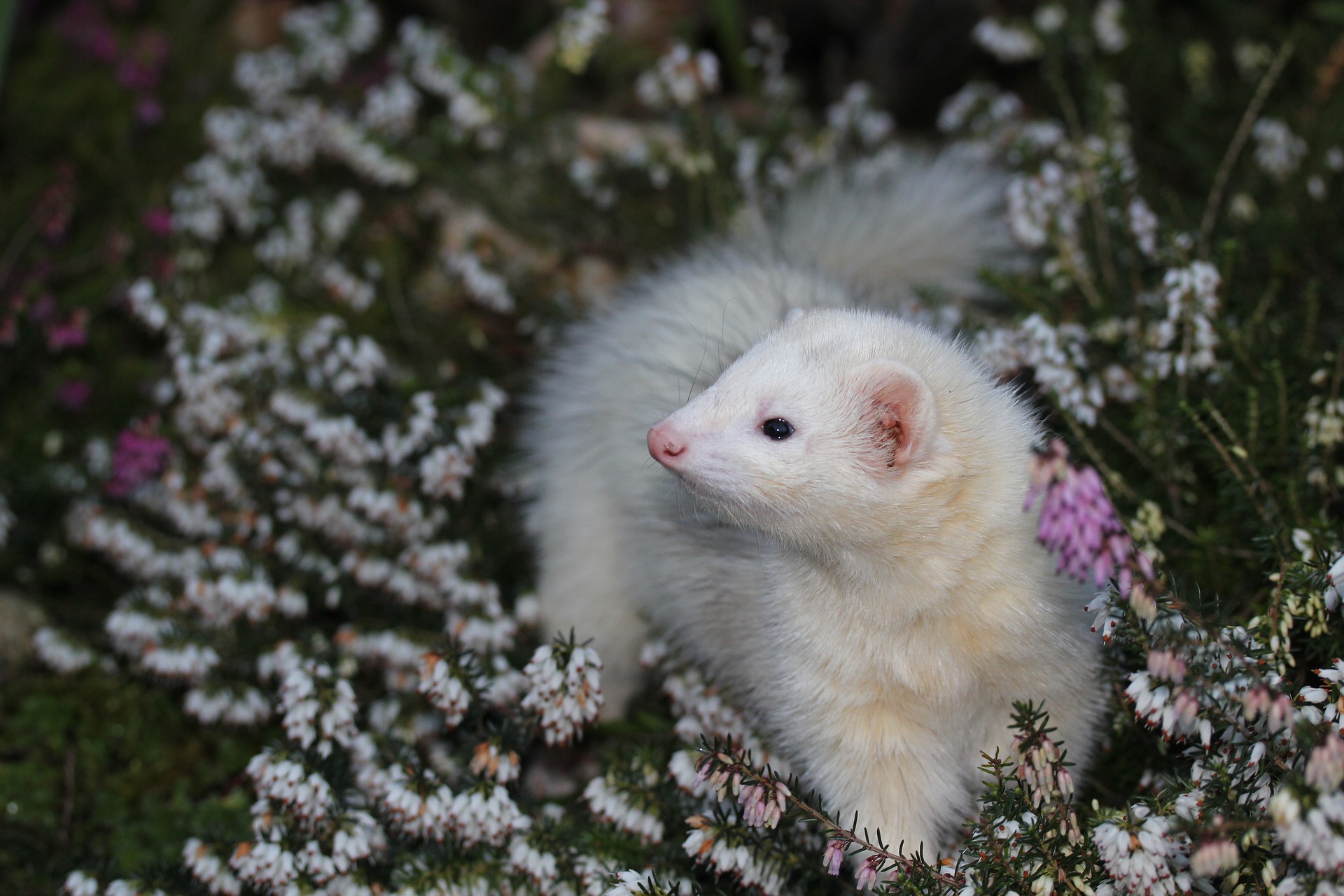

You’ll sometimes see this color referred to as a dark-eyed white Pattern to distinguish it from albino ferrets. Their guard hairs and undercoat will be a white to cream color, although white is preferred for showing. A dark-eyed white ferret will have burgundy eyes and a pink nose.
Ferret Patterns
Now we know the eight colors that domestic ferrets come in, we’ll take a look at the patterns that you can see within these colors!
(1) Standard Pattern
A ferret with a standard pattern has 90% to 100% colored guard hairs, with the remaining colored white. Their bodies will be lighter in color than their points, and they will have a fill or T mask across their faces.
(2) Roan Pattern
Roan patterned ferrets have 50% to 60% colored guard hairs, with the rest white. They can have different masks depending on their color.
(3) Roan Pattern
Also known as the Siamese pattern, point ferrets will have a distinct color difference between their body color and the color of their points. The mask pattern will depend on their color. A V mask is acceptable for black, sable, black sable, cinnamon and chocolate ferrets. Champagnes can either have a V mask or no mask. The T pattern or full mask isn’t accepted for ferrets with the point pattern.
(4) Solid Pattern
A solid patterned ferret should have 100% of its guard hairs colored. The color concentration across a solid patterned ferret’s body should be the same from their head to their tail.
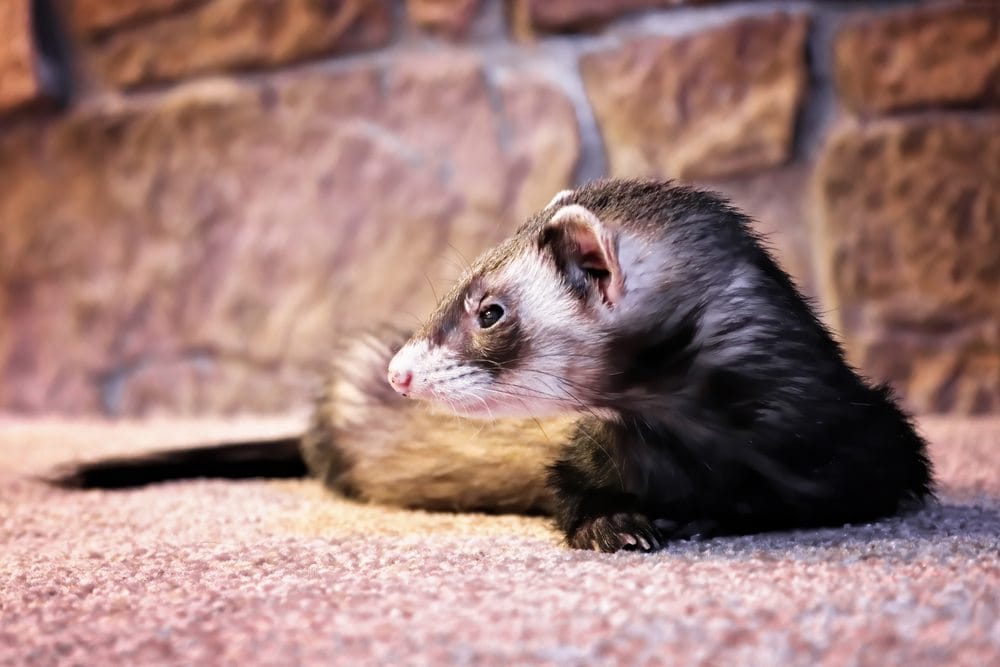

White Patterns
(1) Mitt Pattern
Ferrets with a mitted pattern will have white mitts on all four feet. They can also have a white bib, knee patches, and tail tip.
(2) Blaze Pattern
Ferrets with the blaze pattern will have a long white blaze starting on their forehead and going down between their ears and ending at the shoulders. Their mask can vary, but it should never be a full-color mask across the whole face. Colored rings around their eyes may be seen. Their front and back feet can have either white mitts or white tips (smaller than mitts). They may also have white knee patches and a white tip of the tail. Across their tummies, a white bib, speckles, or roaning are all acceptable.
(3) Panda Pattern
Ferrets with a panda pattern should have an almost totally white head, including their necks and throats. They can have colored guard hairs over the eye area, forming shaded rings. Panda patterned ferrets should have four white mitts and may also have white knee patches and tail tip.
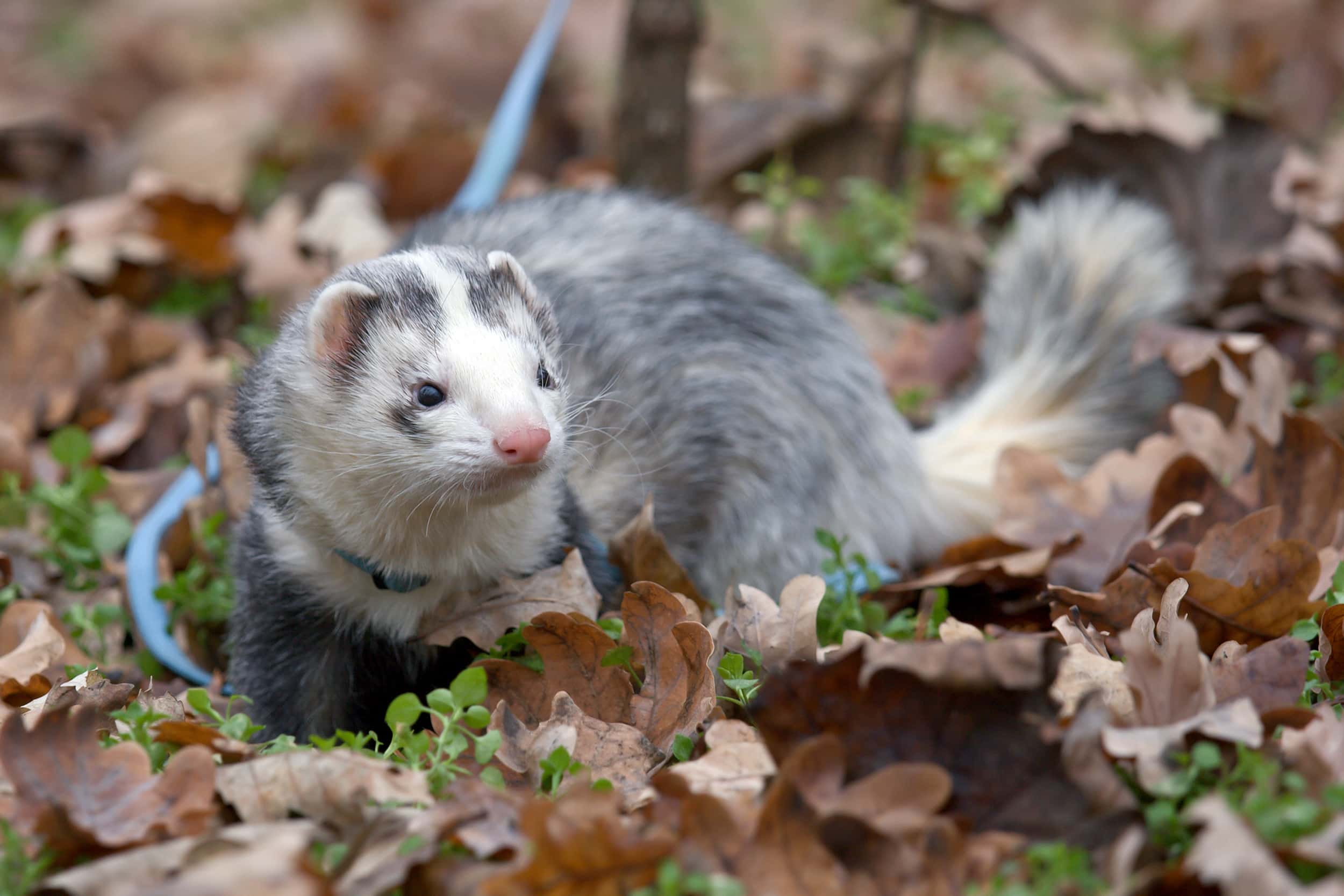

other pattterns
Lastly, we have two patterns that aren’t accepted by the American Ferret Association, but they may be seen in some domestic ferrets, especially those not intended for showing.
(1) Striped Pattern
This pattern forms a stripe of darker guard hairs across a white coat. The stripe will usually be brown and located down the ferret’s back.
(2) Mutt Pattern
This pattern is usually used to describe a ferret with any coat color and pattern that doesn’t fall neatly into one of the above categories. You may see different coat colors, roaning, spots, and other patterns all on one ferret!
Figuring out what color and pattern your ferret is can be tricky, especially considering that they can change color when they shed their coats!
Older ferrets will also start to grow more white guard hairs, which can make it difficult to figure out their true color if you adopted them at an older age.
Did you work out what color your pet ferret is? Or maybe you’ve decided which coat color and pattern you’d love your next ferret to have!
Interested in getting a ferret of your own?
Check out our available ferrets if you are interested in buying or adopting a ferret of your own. We have a variety that has been well trained ( understand their name and are potty trained ).
You can also buy a pair that will understand each other and leave together happily because they are already familiar with each other.
Our ferrets have a tolerance for other pets, as we race them amount our cats and dogs too.

happy with blog